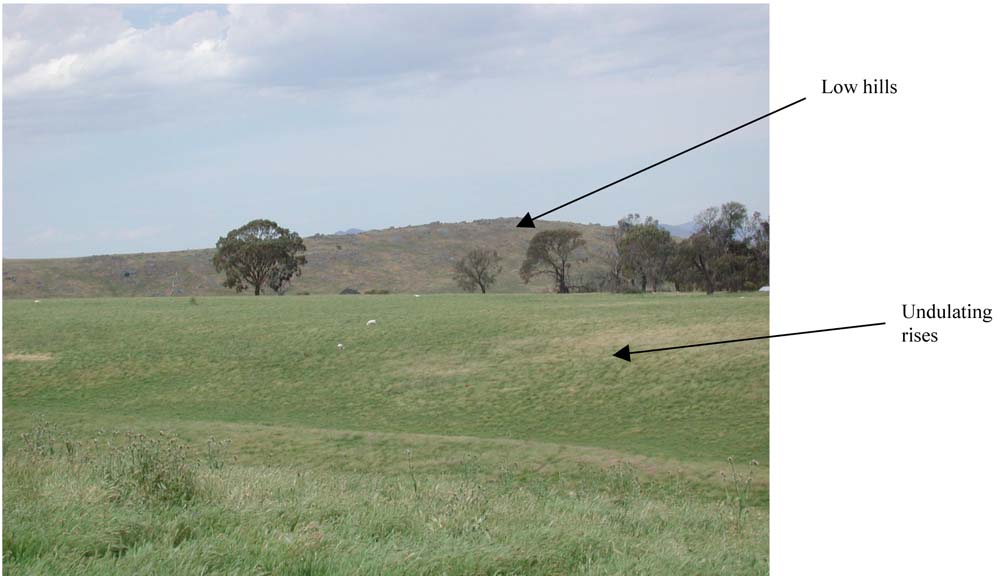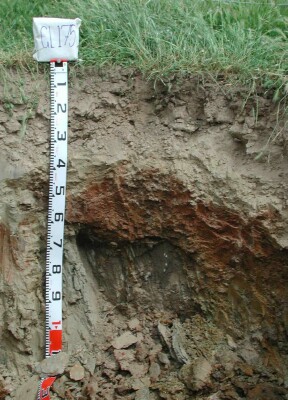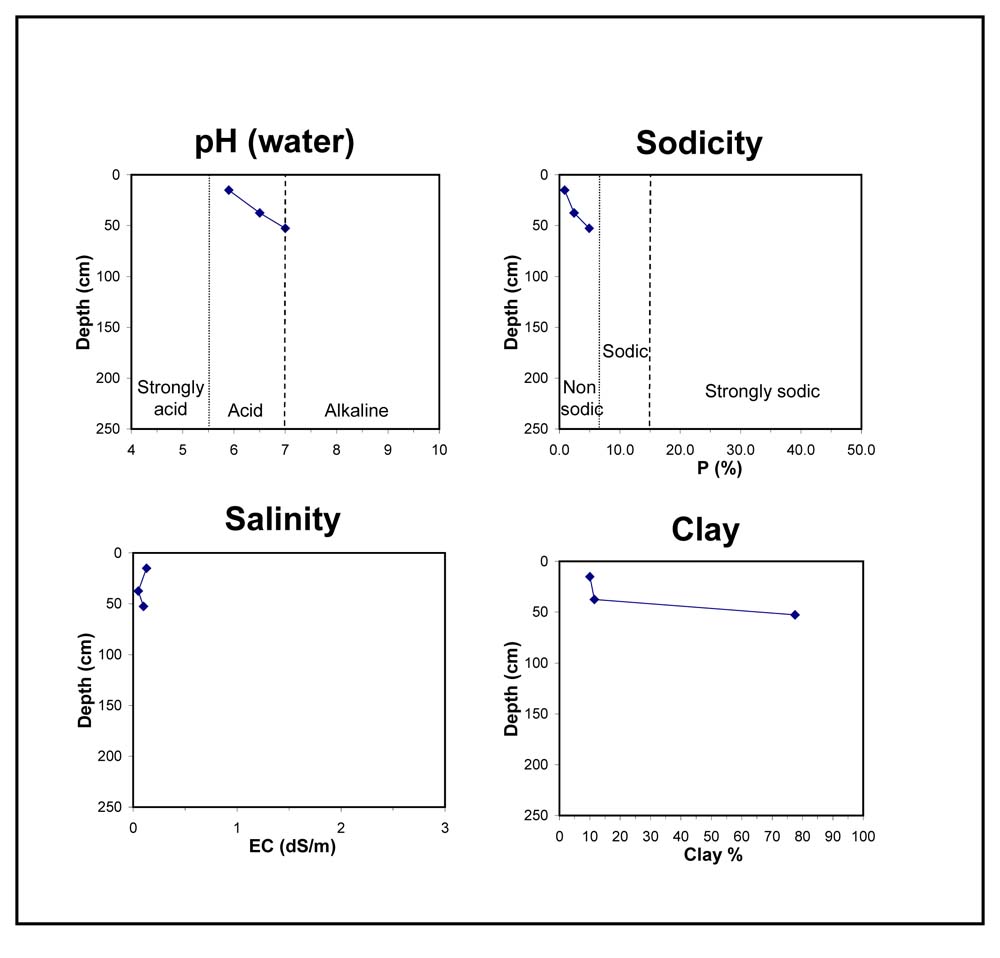GL175
| Site: GL175 | Land Unit: Ararat Schists |
| Aust. Soil Class.: Bleached-Mottled, Eutrophic, Brown CHROMOSOL (Confidence level 1) | |
 | General Land Unit Description: This land unit forms the hills of metamorphic schists. The soils tend to be quite shallow, often around 60 cm in depth. There can be a bleached A2 horizon. In some cases, particularly on the steeper slopes and crests, there can be many quartz coarse fragments, usually above the clay subsoil. The most common landform is undulating rises, which this soil type represents. The soil becomes shallower and banded rock outcrops become more apparent the steeper the land. The capability of the low hills and hills land units are limited due to the slope, rock outcrops and shallow soils, as well as the susceptibility to water erosion. The gently undulating plains generally form the lower slopes of the rises and have a better capability for land use options due to a more favourable landscape and generally deeper soils. |
Site Description:
| Slope: 16% | Geology: Cambrian schists |
| Landform pattern: Undulating rises | Position in landscape: Lower slope |
| Internal drainage: Moderately well drained |
Soil Profile Morphology
| A1 | 0-30 cm | Dark brown (10YR3/3) sandy loam, weak angular blocky structure (20-50 mm), very firm consistence when dry pH 5.9. Abrupt transition to: |  |
| A2 | 30-45 cm | Yellowish brown (10YR5/6) sandy loam, conspicuously bleached (10YR8/2) when dry, massive structure, firm to very firm consistence when dry, many large angular quartz coarse fragments (10-50 mm), pH 6.5. Clear but wavy transition to: | |
| Subsoil | |||
| B2 | 45-60 cm | Yellowish brown (10YR5/6) medium heavy clay, many distinct red (2.5YR4/8) mottles, strong prismatic (50-100 mm) to strong angular blocky structure (20-50 mm), very firm consistence when dry, pH 7.0. Transition to: | |
| C | 60-120 cm | Weathered rock. |
Key profile features:
- Strong texture contrast between topsoil and subsoil
- Shallow soil
- Many coarse fragments in A2 horizon
- Bleached A2 horizon
- Mottled subsoil
- A2 horizon dispersive when dry



